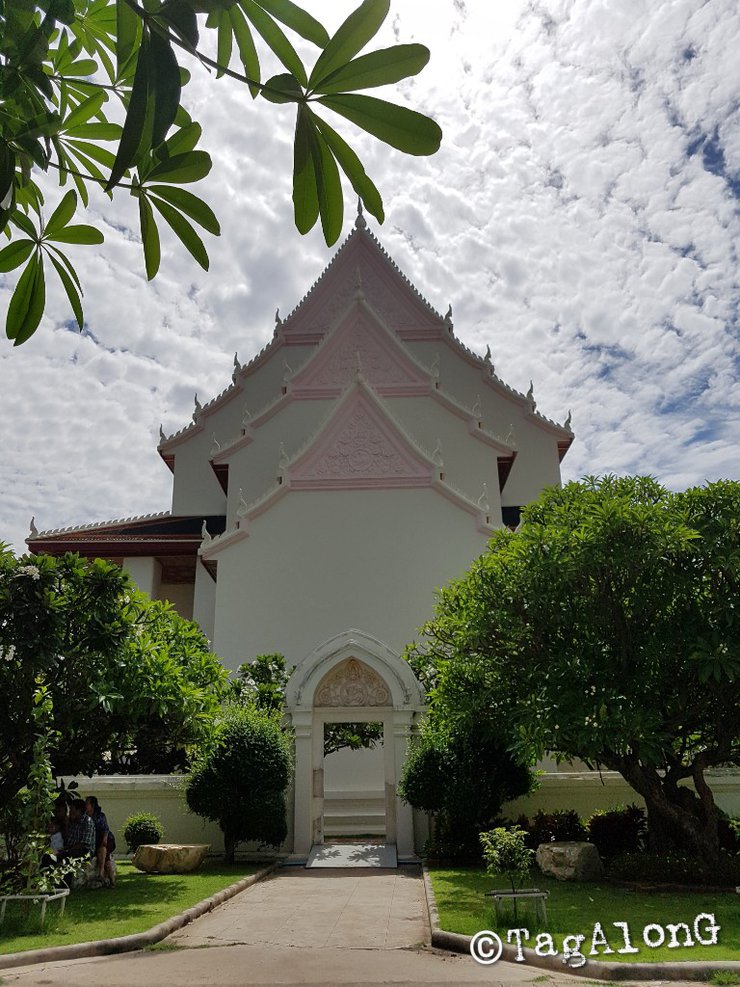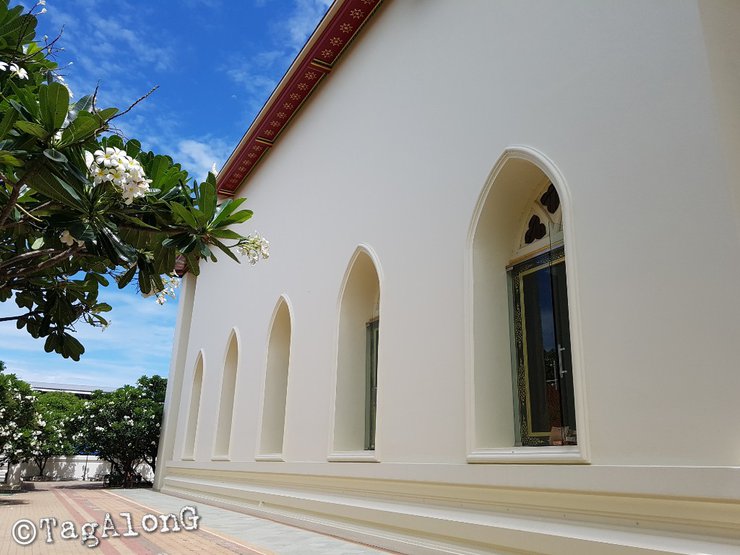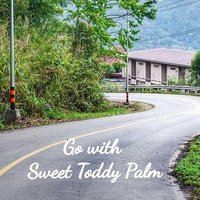With the arrival of the rainy season, the farming season begins. This is the perfect time to take a drive and enjoy the view of the young, green rice stalks that are starting to sprout across the fields.

Today, we decided to take a road trip to Ang Thong. The reason we chose this province is because over 80% of its land is dedicated to rice cultivation. As a result, wherever you look, you'll see endless green rice fields. And if you're looking to make merit by visiting nine temples, Ang Thong is a great choice, as there are several ancient temples dating back hundreds of years located within close proximity to each other.

The first destination of the day is Wat Chaiyo Worawihan, also known as "Wat Kesa Chayo," located on the banks of the Chao Phraya River. The date of its construction is unknown, but it houses a large wiharn containing the revered Luang Pho To Buddha statue.

In Ang Thong, a must-try dish is Pad Thai. At Wat Chaiyo, there is a delicious Pad Thai vendor located in the market next to the temple's parking lot. We usually eat Pad Thai at Ai Noi's shop, but today it was closed. After wandering around for three rounds, we finally ended up at Je Meow's shop.

An unassuming plate of Pad Thai, priced affordably, belies its extraordinary flavor. The springy noodles, perfectly cooked, are coated in a harmonious blend of sweet, sour, and savory notes. A sprinkle of ground peanuts adds a nutty richness, elevating this generous portion to new heights. At only 40 baht, this Pad Thai will keep you satisfied until the evening.

The temple's viharn and bot appear to incorporate European architectural influences. This is evident in the pointed arch window frames, reminiscent of Gothic architecture, and the black and white checkerboard tile pattern. This fusion of styles may be attributed to the temple's extensive renovation during the reign of King Rama V, a period marked by the influx of Western influences.

The original Phra Luang Pho To statue, built by Somdet To of Wat Rakhang, collapsed. King Rama V then ordered its reconstruction.

Unfortunately, the church was closed to the public on the day of our visit. We understand that the church houses beautiful murals inside.


After paying respects to Luang Pho To at Wat Chaiyo, we continued our journey.

Dried incense sticks beautifully displayed by the roadside.
Our next destination is Wat Ban Phran, which is believed to have been built during the Sukhothai period and was abandoned for over a hundred years. It was later restored by Phran Am, a hunter who chased his prey to the temple's entrance and felt remorse. Hence, the temple is named Wat Ban Phran.

The distinctive feature of Wat Ban Phran is its architecture, which is adorned with ceramics, antique porcelain, and Benjarong ware. It is believed that the concept was inspired by the architectural decorations of Wat Pho, which was influenced by Chinese art. However, Wat Ban Phran's unique characteristic is the use of whole Benjarong bowls and plates for decoration, without breaking them first.






The interior of the chapel is adorned with golden teakwood and houses the revered Luang Pho Kraithong, a seated Buddha statue crafted from laterite. This principal Buddha image is believed to be over 900 years old.

Behind the ordination hall is a yellow-painted pavilion adorned with benjarong porcelain. It is currently undergoing restoration and renovation.

Wat Ban Phran is a small, tranquil temple with few visitors, possibly due to its limited recognition among outsiders.
Our next destination was Wat Khun Inthapramun, a renowned temple in Ang Thong province. On the way from Wat Ban Phran to Wat Khun In, we passed through beautiful rice fields, so we stopped to take some photos.






Upon entering the temple grounds, visitors are immediately struck by the sight of a colossal reclining Buddha statue, the second largest in Thailand. The statue is exposed to the elements as the viharn that once housed it has completely collapsed, leaving only the surrounding pillars standing.

The face is beautiful in the Sukhothai Buddhist art style.


Although it is outdoors, the atmosphere is shady and pleasant, with many large trees.


Yellow cloth scraps used to tie together flowers, incense, and candles for offerings to Buddha are now tied to trees. This practice seems to have emerged in the past 3-4 years, as I don't recall seeing it during my earlier visits to this temple. The reason behind this custom is unclear, but it could be due to the resemblance of the yellow cloth to Buddhist robes, leading people to avoid discarding them in trash cans or on the ground. Instead, they tie them to trees, creating a visually appealing and playful activity for temple visitors, resembling the hanging of golden threads.
The next temple is Wat Muang, which many people may know well because it houses the largest Buddha statue in the country (or perhaps even the world, I'm not sure). The statue is visible from several kilometers away before reaching the temple.


This Buddha statue took 16 years to build and was dedicated to King Rama IX. The total construction cost was 104 million baht. However, the statue was not only built with size in mind, but also with great beauty and elegance. The face is oval-shaped, the eyebrows are arched, the nose is curved, and the lips are slightly parted in a smile, all in accordance with Sukhothai Buddhist art. The fingers are graceful, and the chest is full and rounded.



The customary practice when paying respects and making offerings at this temple is to focus your mind on your wishes and then reach out with both hands to touch the fingers of the Buddha statue.


Upon reaching the summit to pay respects, a sense of tranquility washes over us as we touch the Buddha's fingers. A cool breeze caresses our skin, and it feels as if we are the only ones present in that moment.
Upon descending to the lower level, we were astonished by the arrangement of the temple's sculptures. The experience was vastly different from the serene atmosphere of the Great Buddha Plaza. The overwhelming abundance of sculptures left us disoriented, unsure of where to begin our observation. Consequently, we abandoned our attempt to appreciate them.



The final temple of the day was Wat Sangkrathai, an abandoned temple with a chapel covered by four large Bodhi trees. The chapel's roof had completely collapsed, leaving only the walls standing. Inside, the walls were divided into three rooms. Upon entering the chapel, one would encounter the first room, a small chamber housing Luang Pho Kaen. The second room, the largest, housed Luang Pho Wan Dee, Luang Pho Si, and Luang Pho Suk. The room at the back was empty.


The reason why it is an abandoned temple is believed to be due to the strong presence of spirits in the area. Monks were unable to live together in peace and constantly quarreled and fought with each other. Eventually, they all moved to the nearby Wat Phai Lom, taking wood and bricks from Wat Sangkrathai to build their new quarters.





The name "Wat Sangkathai" is believed to be derived from the abundance of rabbits that once inhabited the area. According to local folklore, villagers who hunted and consumed rabbit meat suffered from birth defects in their offspring. This consequence is attributed to karmic retribution for their actions.
Wat Sangkathai is a small, peaceful temple that is rarely visited. However, its unique beauty and mystical atmosphere are unmatched.
After visiting Wat Sangkathai, it was already 4 pm. We were starting to feel hungry as we hadn't eaten lunch (the Pad Thai we had for breakfast was surprisingly filling). Therefore, it was time to find something delicious to eat. We stopped for a meal at Pin To Restaurant, which was conveniently located on our way back to Bangkok. The restaurant is situated along the Chao Phraya River and is decorated with antique household items, especially lunch boxes (we didn't take any pictures). The food was tasty and reasonably priced. While we were enjoying our meal, some jet skiers rode by and put on a show for us.
Dinner was finished around six o'clock. It's time to go home. Let's say goodbye with a picture of dark clouds in the evening. See you on the next trip.

Tag AlonG
Tuesday, October 8, 2024 11:21 AM





















